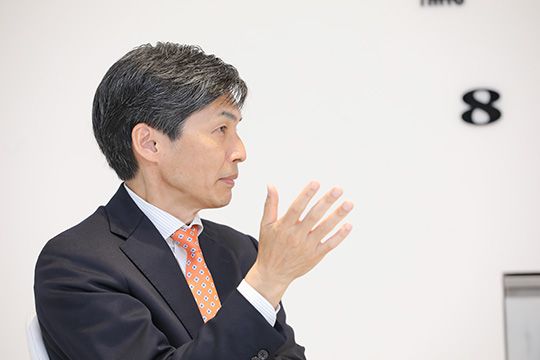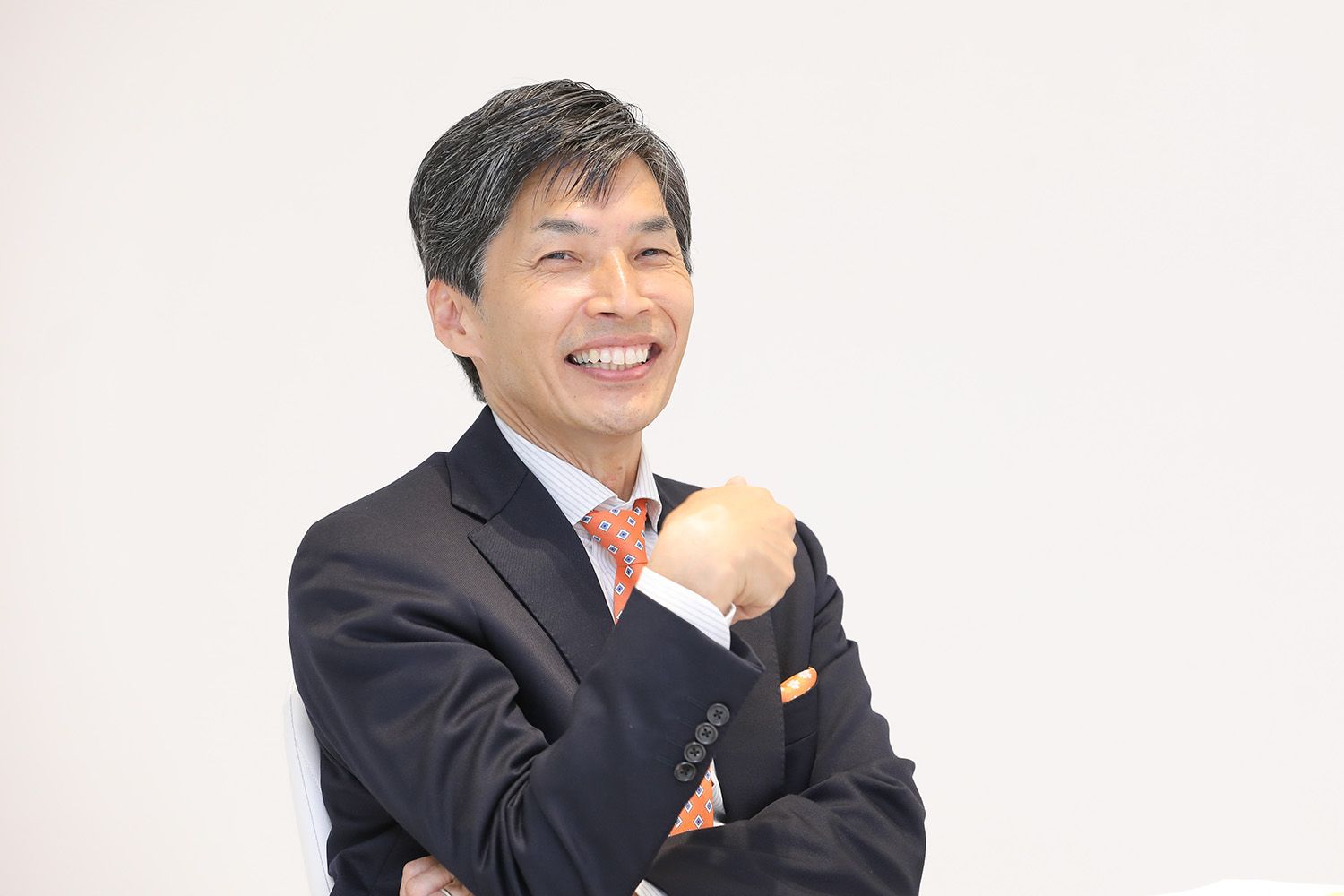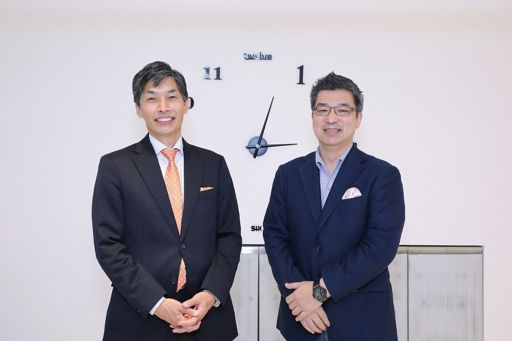An increasing number of companies have been taking on the challenge of implementing digital management and shifting to digital since the COVID-19 pandemic. However, new initiatives do not always proceed smoothly, and we hear that they are running into some kinds of "walls.”
In this article, we will introduce the discussion conducted between Mitsuo Tomita, President and CEO of ANA NEO Inc., a newly created company under Japan's aviation industry leader ANA Holdings, Inc., and Masayuki Chatani of KPMG Ignition Tokyo. They envision and fantasize about post-COVID-19 aviation demand and integration with new businesses while asking how ANA NEO was founded by steering into the digital domain, which is completely different from the business of its parent company, as well as its struggles, and what it is trying to accomplish through its new journey of metaverse travel.
Contents
- Link to Vol. 1
- How Can New Technology Be Incorporated into Our Lifestyles?
- Enjoyment and Business Potential of Travel-based Metaverse
- Essential Pleasure and Excitement of Traveling Cannot Be Satisfied by Technology Alone -ANA NEO’s Winning Odds-
- How Will Mobility and Travel Change in 50 or 100 years?
- Profile of Interviewee
How Can New Technology Be Incorporated into Our Lifestyles?


(Mitsuo Tomita, President & CEO, ANA NEO, Inc. (left), Masayuki Chatani, Representative Director & CEO of KPMG Ignition Tokyo and CDO of KPMG Japan (right)) *Professional affiliation and official position in the article are at the time of publication.
Chatani: YouTube is indeed a model for UGC, and its content has increased dramatically probably because of the spread of smartphones and the ease with which videos can be taken and edited. With that in mind, what kind of production tools will ANA NEO be providing?
Tomita: Basically, we will be providing what is called 3D computer graphic tools. As Tabata-san’s JP GAMES have very high technology, we will be building the tools based on that. One new system I can introduce here is to have someone take and send a video, have AI process the images and then incorporate an avatar into them. There are issues to be resolved but by using this system, it’s possible to easily reflect 360-degree images captured by users in a space.
When I’m at such sites, I feel that technological hurdles have been lowered, enabling many things to become feasible.
Regarding this project by ANA NEO, the fact that airline companies like us are now able to enter the world of the metaverse is proof that various new technologies are being created and evolving and that the leveling of technology is taking place.
Taking smartphones, for example, a project such as this has only become possible now that 3 to 4 billion people around the world have smartphones. This evolution is making the experience of the metaverse and parallel worlds more of a reality. This is the moment when I feel that, after all, it’s the evolution of technology that’s supporting everything.
Chatani: In this sense, I'm curious that you have ventured to choose a smartphone as a device to create an immersive experience of traveling in this metaverse. Using VR equipment as well is not impossible now, is it?
Tomita: As you just pointed out, I think that the use of VR equipment is also an option for creating an immersive experience, but our first priority is to improve the accuracy of graphics to maximize the immersive experience on a smartphone.
This decision was based on our strong motivation to "first of all create a space where people can gather together" and "provide this new travel experience and the enjoyment it spreads to people around the world, from the elderly to children." We also hope to prioritize participation via smartphones even if we have to somewhat sacrifice the immersive experience. The easier it is for users to participate, the more easily it will be for the metaverse, which is considered out-of-the-ordinary now, to be widely accepted by the public. In this context, I feel that the market for VR devices is still much smaller than that of smartphones.
However, as mentioned earlier, technology is sure to advance and there will probably come a time in the near future when we can easily and inexpensively experience VR with a glasses-like device instead of the current age, where VR equipment costs tens of thousands of yen. I have high expectations for the evolution of technology in this area.
Enjoyment and Business Potential of Travel-based Metaverse
Chatani: Listening to the outline of the “Sky Whale,” I was reminded of the magazine "Mu—Traveling in another World,” published jointly by the magazines “Globe-Trotter Travel Guidebook (Arukikata Co., Ltd.)” and "Mu (ONE PUBLISHING Co., Ltd.)."
You can imagine that the magazine is very interesting, as it’s a collaboration between “Globe-Trotter Travel Guidebook,” a guidebook for overseas travel, and “Mu,” which focuses on themes such as out-of-place-artifacts (OOPArt), wonders of the world and parallel universes. I think that it would be fun to see this in a virtual world. How do you want people to enjoy the “Sky Whale” and what are the key points for developing this as a business?
Tomita: The COVID-19 pandemic has certainly reduced the need for business travel but I hear people say that the desire to travel and see new things has not diminished at all. On the other hand, I recently heard that some people also feel “it’s a bit of a hassle to go somewhere even after the pandemic settles down.” They want to travel but feel it’s a lot of trouble to “pack, go to Narita or Haneda, go through all the formalities and get on the plane and so on.” This feeling seems to be taking root now.


In this sense, we believe that the services we are going to launch in the future will be of the highest quality, as close to the real world as possible, to arouse people to think “Let’s go there ourselves!”
In fact, in our internal discussions, we often talked about the concern that “if traveling is digitalized and we can go on a metaverse journey, won’t people stop going on real trips?” However, we are convinced that if we can produce a metaverse space with high accuracy and sophisticated quality, it should, on the contrary, inspire the desire to actually go to such places.
We believe that the most important thing in a metaverse is how long people stay there. As far as I can see, I feel that many small metaverse spaces that exist in the world today have not yet reached the state where "people stay for a long time." It seems like people who are interested in the digital realm take a peek at the new metaverse and exit saying, "I see, so this is what the world looks like.” We believe that the key to overcoming this issue is how we can incorporate an element of entertainment into it.
That’s why ANA is teaming up with JP GAMES to take on the challenge of creating a metaverse space where people can stay by incorporating game technology and know-how. Especially if we want to do a BtoB business, it will not grow as a business model unless people stay there. Even if we start the service with BtoC at first, the idea is to shift to BtoB and so, unless we can solve the problem of how we can attract people with BtoC, it won’t become a growth model. I think that this is the most important thing.
Essential Pleasure and Excitement of Traveling Cannot Be Satisfied by Technology Alone -ANA NEO’s Winning Odds-


Chatani: I would like to ask a bit of a tough question now. We all know that mega-platformers like Meta Platforms (Meta) and Microsoft are focusing on creating the metaverse. With this in mind, I’d like to ask you, "Can the metaverse that ANA NEO creates beat them?”
Tomita: Mega-platformers are all focusing on the metaverse, and considering their speed and the amount of money they’re investing, I know that this is a world where the balance of power will change in no time, even if we have the advantage of having "started a little earlier." However, I also believe that this world does not depend simply on technological competition. What’s important, I think, is how to incorporate the interface with humans into the worldview.
Fortunately, ANA has many ANA Mileage Club members in the real world, and we believe that linking with them will give us a unique advantage. In other words, if we can make a connection that enables users to move in both the metaverse and the real world, we have a chance to win. In fact, I believe that only metaverses with some kinds of characteristics like this can survive.
Now, I would like to ask a question from my side about the future of the metaverse space. The general trend until now has been the giant platformers dominating the digital realm and swallowing up smaller, similar services. Do you think that the same thing will happen with the metaverse?
For our part, we think and hope that it will be decentralized. It will no longer be an age of oligopoly. On the contrary, we think that various metaverses will be created, that the key to survival will be whether a metaverse has a distinct characteristic or not, and that the metaverses that survive will be linked to each other.
This is why we envision that the way to survive is for us, as the ANA Group, to emphasize the characteristic of having “travel” at the core of our operations.
Various other companies will probably develop their metaverse in the same way, and I feel that how they are able to demonstrate the strength of the core business that they have developed in the real world will become important in the new world.
Without the strengths that have been cultivated over the years, I also believe that the digital management and DX that large companies are trying to implement cannot compete with those of companies that specialize in digital technology. We try to keep this in mind in our work.
Chatani: What you just said reminded me of the interesting new way ANA NEO will be offering enjoyment of travel, which is “to not only travel in terms of distance but also in terms of time.”
The other day, I found a photo that my parents took when we lived in Tokyo for some time, about 45 years ago. I looked up the sushi restaurant where the photo was taken and found out that it’s still doing business. I’m thinking of actually visiting the restaurant sometime and asking, “Have you been operating here for 45 years?” It will probably be an experience that will take me back to 45 years ago. Such an "experience of transcending time" is very interesting.
Tomita: That’s true! We certainly would like people to experience the fun of such time-transcending travel but another thing we would like to offer is to "transcend the physical distance of travelers."
In "Premium V Trip," which I introduced in the previous section, multiple people can experience a metaverse trip at the same time, and we believe that this is a new proposal for people who used to go on family trips when they were children but now that they are adults and each of them has their own family, it’s difficult to have such an opportunity.
For instance, there may be many obstacles for grandparents and grandchildren to travel together, but this will be possible in the metaverse. Also, even those who have difficulty getting around due to illness or physical strength will be able to experience going to memorable places and retrace their memories with their children or grandchildren.
This new form of travel will provide a time that "will be as spiritually fulfilling as a real journey even though it’s not a physical journey." I’m hoping that we will be able to do these kinds of things in this metaverse.
We cannot satisfy such emotional aspects by only pursuing technology. It’s important to have something different which is a little more human, and I think that finding ways to combine the unchanging mentality of human beings is an important element. It’s not a world that can be created only by semiconductors and computers but a world that will be valuable only when human beings are involved in it.
These are some of the things I have been thinking about as I study the virtual trips that can be experienced on YouTube and TV travel shows that are available today. There’s a lot of travel-related content out there but when I thought about why “I still don’t feel the elation I get when I actually go on a trip,” I realized that “it’s because everything is passive.”
The fun of travelling is essentially centered on the active self that thinks, "I want to go there. Let's go there and let's do something there.” I think that passive content may convey the good qualities of the destination but it will leave the viewer feeling somewhat unsatisfied. In this sense, a new travel experience in which you can enjoy moving your avatar in the metaverse space can be very different. I’m sure that people will be able to experience a sensation closer to real travel than any other travel content available in the world today.
How Will Mobility and Travel Change in 50 or 100 years?
Chatani: Now, here’s my last question. How do you think mobility and travel will change in the next 50 or 100 years, and what kind of changes do you think the aviation industry will undergo?
Tomita: The mobility of people that we airlines are responsible for can be broadly divided into two main categories. One is what we call business travel and the other is travelling for fun.
Business travel has clearly changed with the COVID-19 pandemic. Many people probably used to feel that they could only do business face-to-face but now they will tell you that this is not the case. It might have been different if the pandemic had been contained in a short period of time but online meetings have already taken root and it’s no longer the norm to meet and converse in the same space. Even if the face-to-face business style returns somewhat in the future, I foresee that people will not have the same mindset as in the past.


On the other hand, I feel that travelling for fun, contrary to business travel, has not changed from before the pandemic. However, as I mentioned earlier, people may slightly feel that travelling is "somewhat of a hassle." Nevertheless, our feeling of “wanting to see new things” basically remains the same, and so in that sense, I think that real travel will not be totally obsolete in 50 or 100 years and that the momentum for enjoying metaverse travel will increase as well.
Also, we believe that the more the enjoyment of metaverse travel becomes common, the greater the thirst for real mobility and travel will be. This may not just include destinations on earth but also the deep sea and outer space. I truly don’t think that we will be closed in the metaverse or the world we can see now. I think that our feelings regarding travel are probably very close to the essence of human nature.
Chatani: I guess this leads to the very profound theme of “why do people travel?”
Tomita: I believe that human beings will definitely continue to travel. The real pleasure of traveling comes from actively experiencing and finding excitement in strolling around cities and doing activities at the destinations we chose ourselves. With these essentials in mind, we will aim to provide the "entertainment of traveling around the world” as well as "travel gateway experiences" that lead to real travel, and ultimately create a new concept of mobility in the post-COVID-19 age.
Profile of Interviewee


Mitsuo Tomita
President & CEO, ANA NEO, Inc.
Mitsuo Tomita joined ANA (All Nippon Airways Co., Ltd.) in 1987 and led the airline network strategy and alliance strategy at ANA’s Marketing Department. He was also stationed in the U.S. and Singapore, where he was exposed to international marketing and strongly felt the need to expand ANA’s travel and transportation-based customer business, which it has cultivated in the airline business, to the next stage without keeping it only in the real world. In August 2020, he therefore established ANA Neo, Inc. to take on the challenge of a new airline business in the 5G era.
Follow us on KPMG Ignition Tokyo LinkedIn for the latest news.
Connect with us
- Find office locations kpmg.findOfficeLocations
- kpmg.emailUs
- Social media @ KPMG kpmg.socialMedia




